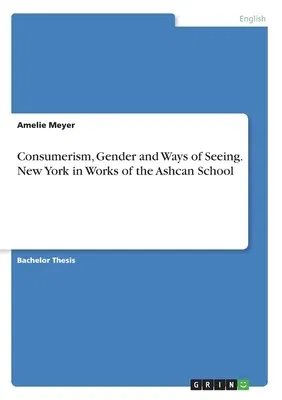Bachelor Thesis from the year 2011 in the subject American Studies -
Miscellaneous, grade: 2,3, University of Göttingen (Philosophische
Fakultät), language: English, abstract: At the turn of the nineteenth
century, the city of New York underwent a tremendous change that is
regarded as a complete "transformation of American culture" (Zurier). An
abundance of scholarly works have been devoted to those developments
that were of a geographic, economic or social nature. An equally great
focus has been on the rise of a new kind of consumer culture which,
according to Tottis, rang in an "age of Amusement" which included the
advent of the department store, popular entertainment and advertisement
(Zurier). Recent scholars, among them Rebecca Zurier, have concentrated
on the role of public display within this consumer culture. People were
not only there "to buy, but merely to 'see' the things" they desired to
purchase (Bowlby, "Looking"). The display and constant "visuality" of
the outer look of the city on the one hand and the mutual gazing of city
people on the other hand caused the need for a "new skill of urban
viewing" people had yet to learn (Manthorne). Thus, new ways of seeing
developed. Within this context of a heavily pictorial and visual
consumer culture, scholars have examined the works of the Ashcan School,
a group of artists known for their 'common' city depictions. Up to the
present, few scholars did not concentrate on the Ashcan artists'
portrayal of poor living conditions, toil and tenements. Instead, they
began to analyze the consumerist scenes of the Ashcan School's oeuvre:
they contemplated the issues of public display, its effects on New
York's citizen and they also scraped the surface of the gender issue
within consumerism. This bachelor thesis is intended to extent this
study in order to provide a coherent picture of how consumerism, gender
and new ways of seeing play together in a number of Ashcan works. The
portrayals of Everett Shinn and John Slo


